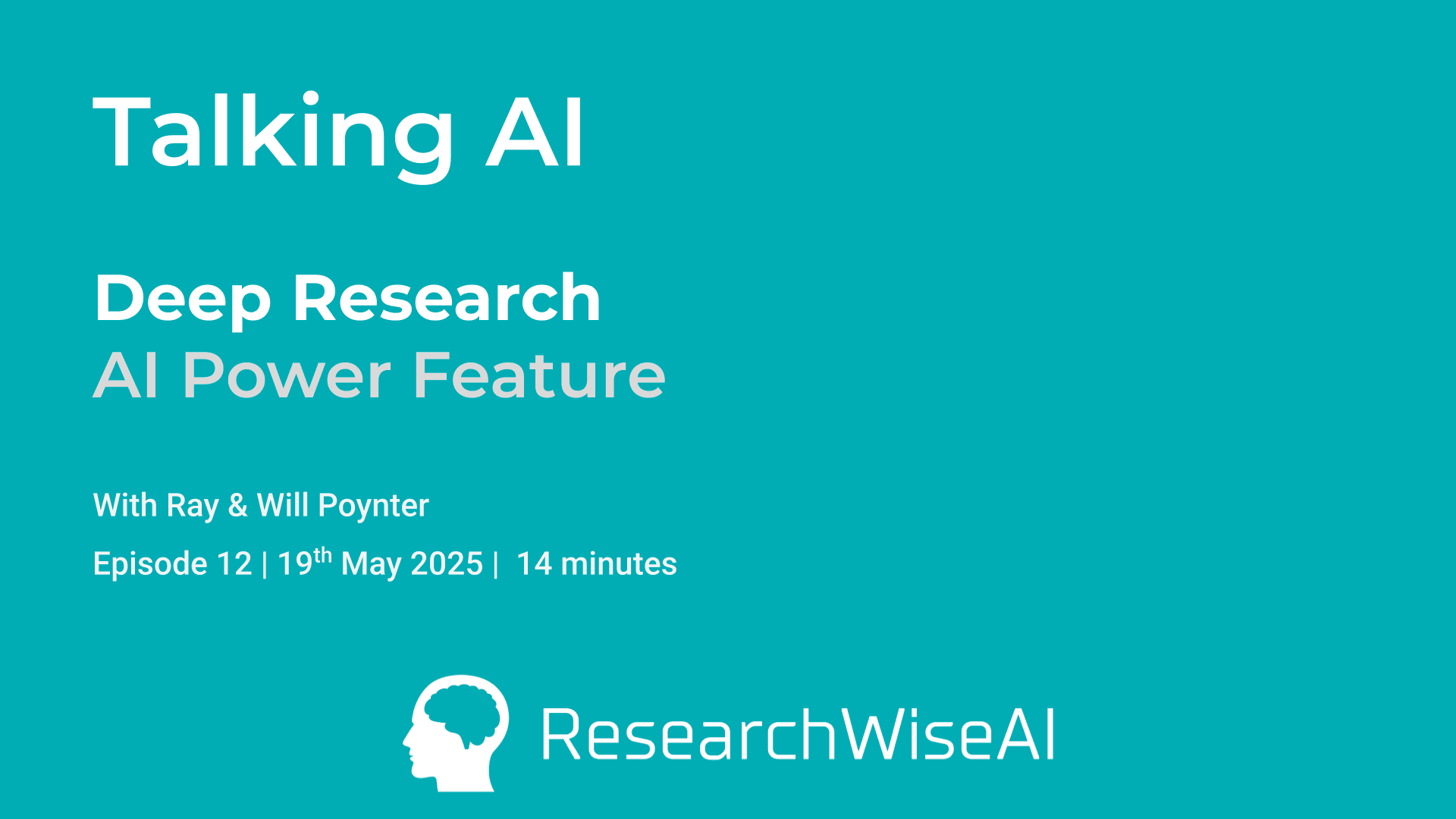Deep Research with LLMs: How ChatGPT, Gemini & Perplexity Super-Charge Insight Gathering
About
In this **Talking AI** episode, co-founders **Ray** and **Will Poynter** break down the rise of **Deep Research**—an AI workflow that combines live web search, long-context reasoning and citation-linked summarisation.
### What You'll Learn - **What “Deep Research” Means** - Why multiple vendors (ChatGPT, Gemini, Perplexity) use the same term - How it differs from standard chat prompts or Canvas sessions - **Speed vs. Depth Trade-offs** - 178 web hits & 30 sources in < 10 min: when the wait is worth it - When iterative Canvas-style prompting is still faster - **Source Quality & Hallucination Control** - Forcing reputable domains, spotting blocked sites (e.g. BBC, pay-walled press) - Using the final summary first, then drilling into citations - **Practical Use-Cases** - Entering new verticals (e.g., canned-coffee market in Japan, TfL transport data) - Generating monthly polling digests, executive briefings, podcast scripts - **Limitations & Work-arounds** - Verbosity, missing premium sources, daily search caps on free tiers - Future outlook: personalised memory, task-based scheduled research, dashboard feeds
---
### Key Takeaways 1. **Deep Research = AI research assistant on steroids**—ideal for zero-to-sixty topic ramp-ups. 2. **Quality in, quality out**—specify sources and always sanity-check citations. 3. **Iterate smartly**—use summaries to steer; don’t wade through 20 pages blind. 4. **Free to start**—Perplexity’s free tier offers one robust run per day; ChatGPT-4o currently leads on depth and reasoning but costs more.
Presenters

Ray Poynter
Founder

Will Poynter
Founder

